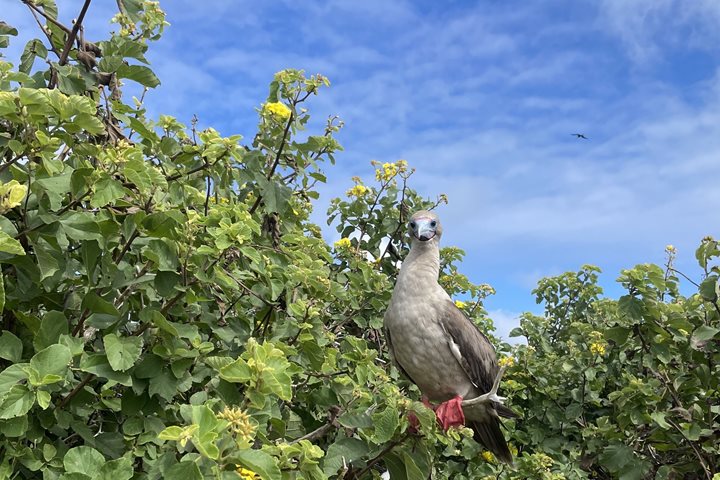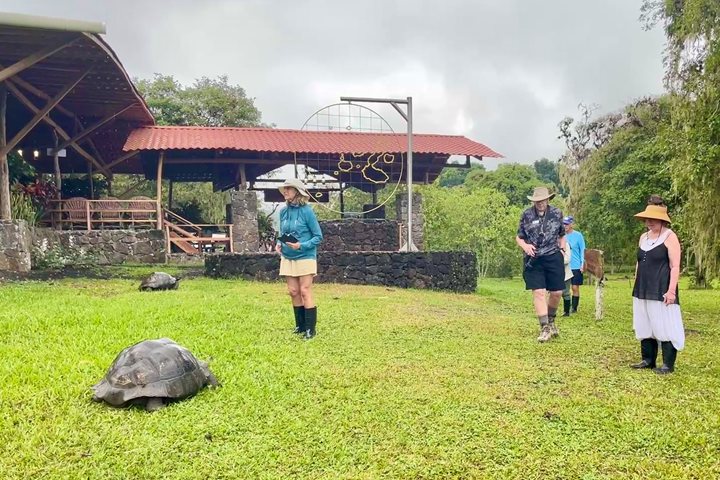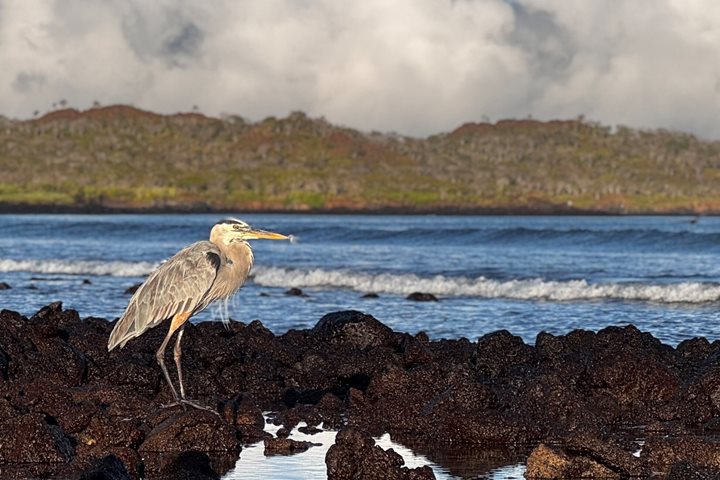Located in the center of the Galápagos archipelago, Santa Cruz is a very interesting island due to its size and elevation. The northern part of the island is in the rain shadow with a chronic shortage of precipitation, while its south-facing side retains the cloud cover pushed by the prevailing southeastern trade winds. Because of these unique climatic conditions, the south of the island is greener, while the northern part has an extended arid zone. Santa Cruz is also the home to a large population of endemic giant tortoises, mostly found in the lush, greener southern “hemisphere” of the island.
5/29/2025
Read
National Geographic Gemini
Genovesa Island
Genovesa is considered one of the Galapagos crown jewels, and today it was showing off all of its splendor. Immediately after breakfast we put on our sturdy shoes and set out to explore Prince Philip’s Steps. This area is known for opportunities to observe not only large colonies of nesting Nazca and red-footed boobies, but maybe, just maybe, the short-eared owl which exhibits diurnal behavior on this island. After this walk we got ready for a dip in the Pacific Ocean and snorkeling along the inner coast of this caldera. The afternoon was equally amazing as we disembarked to explore Darwin Bay, along a short and easy trail that was packed with wildlife. Here we observed not only nesting frigatebirds, red-footed boobies, and Nazca boobies, but also a few yellow-crowned night herons. It was another incredible afternoon in the Galapagos Islands.









